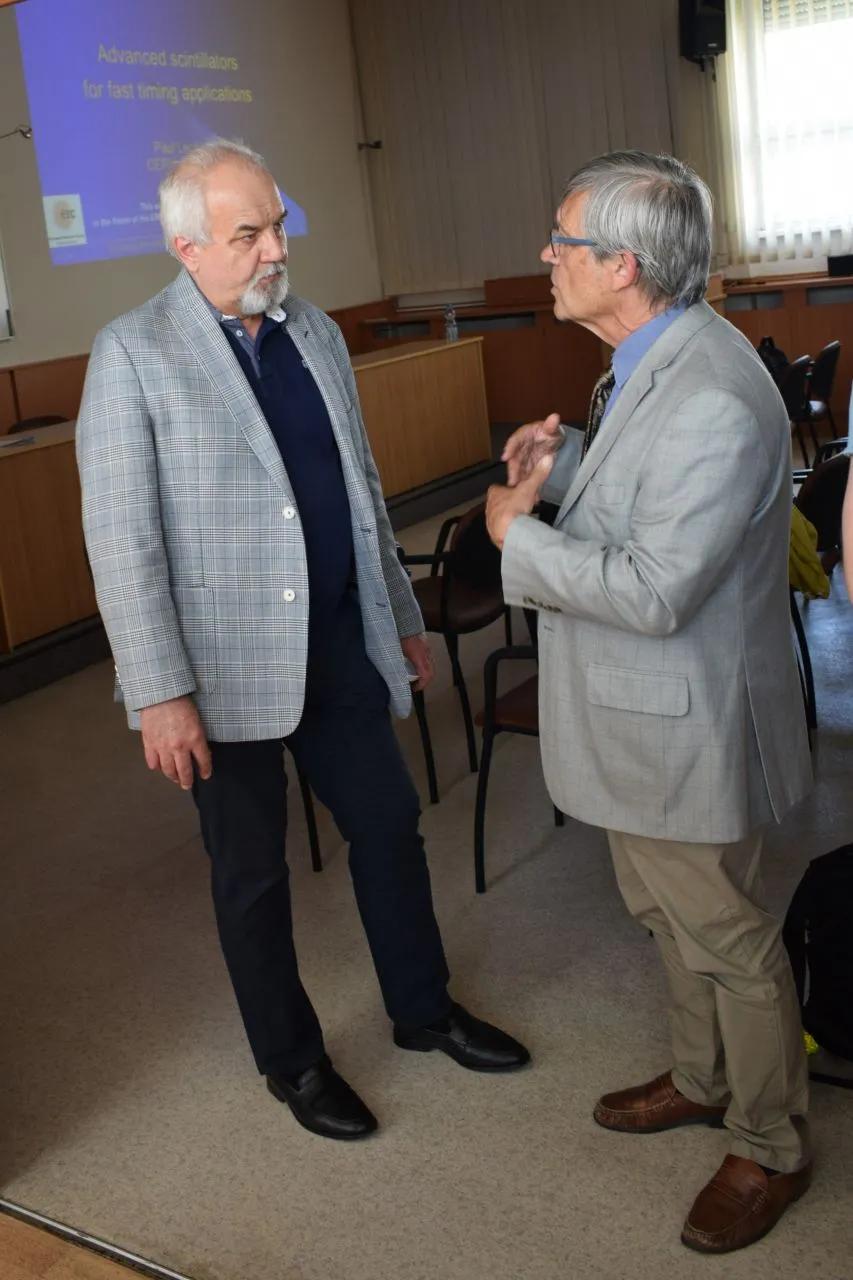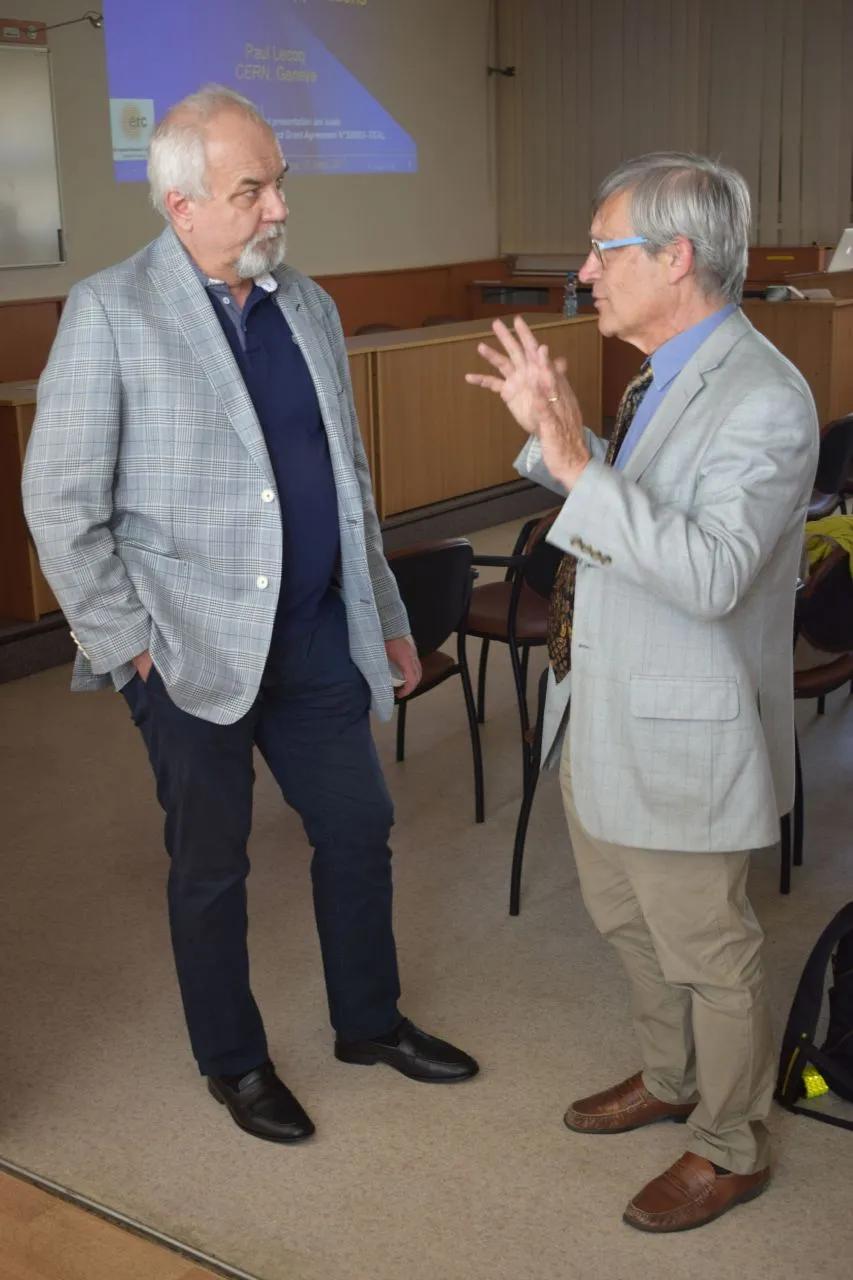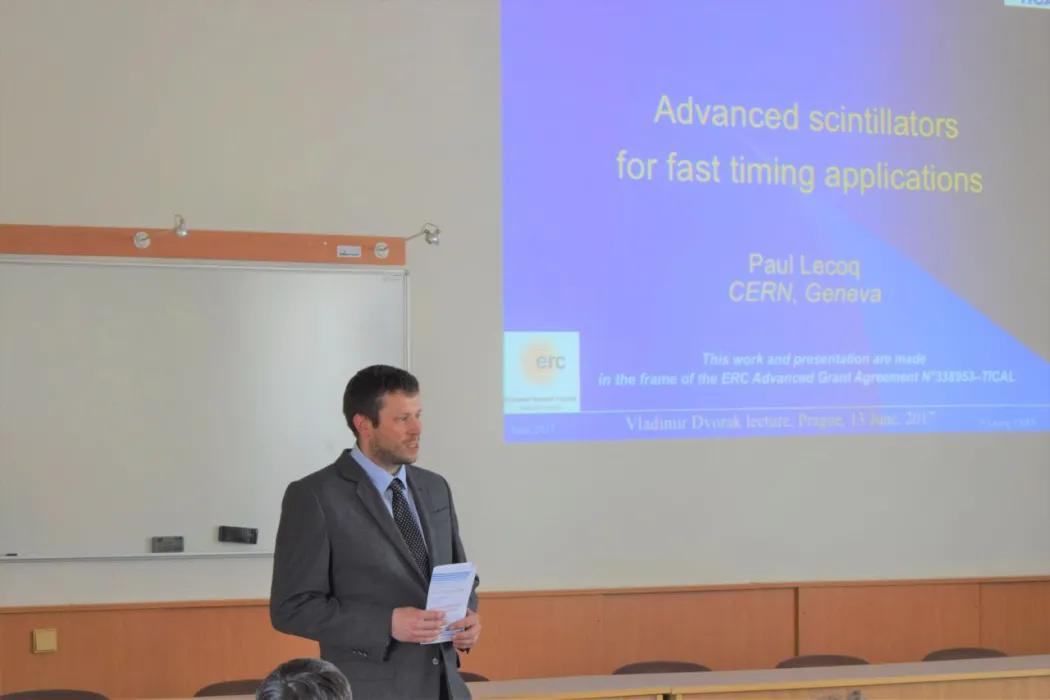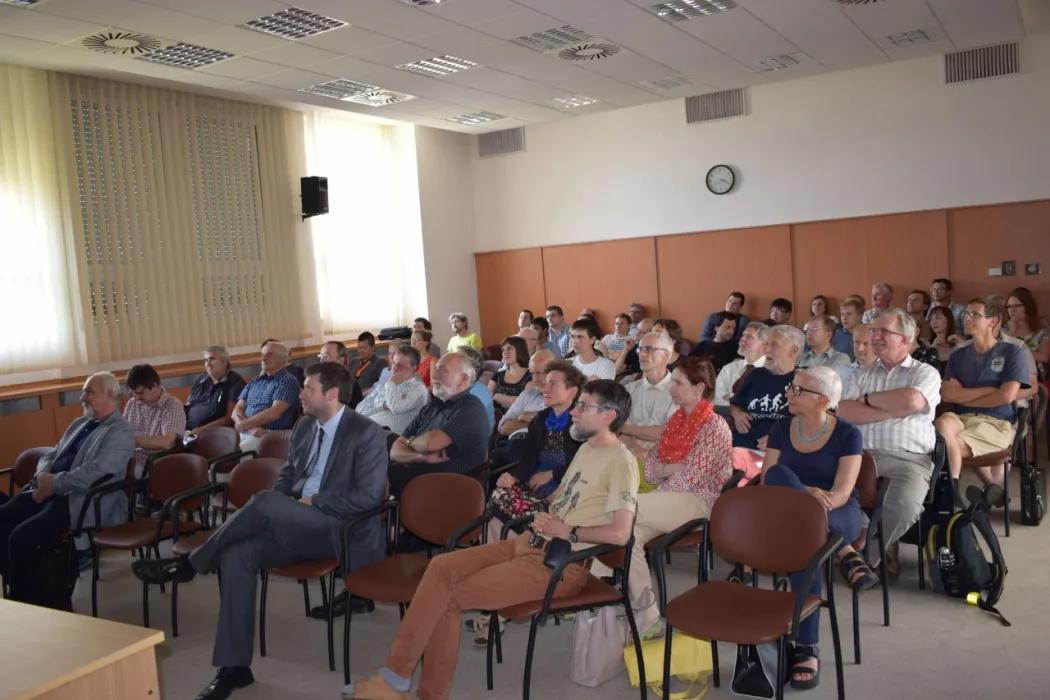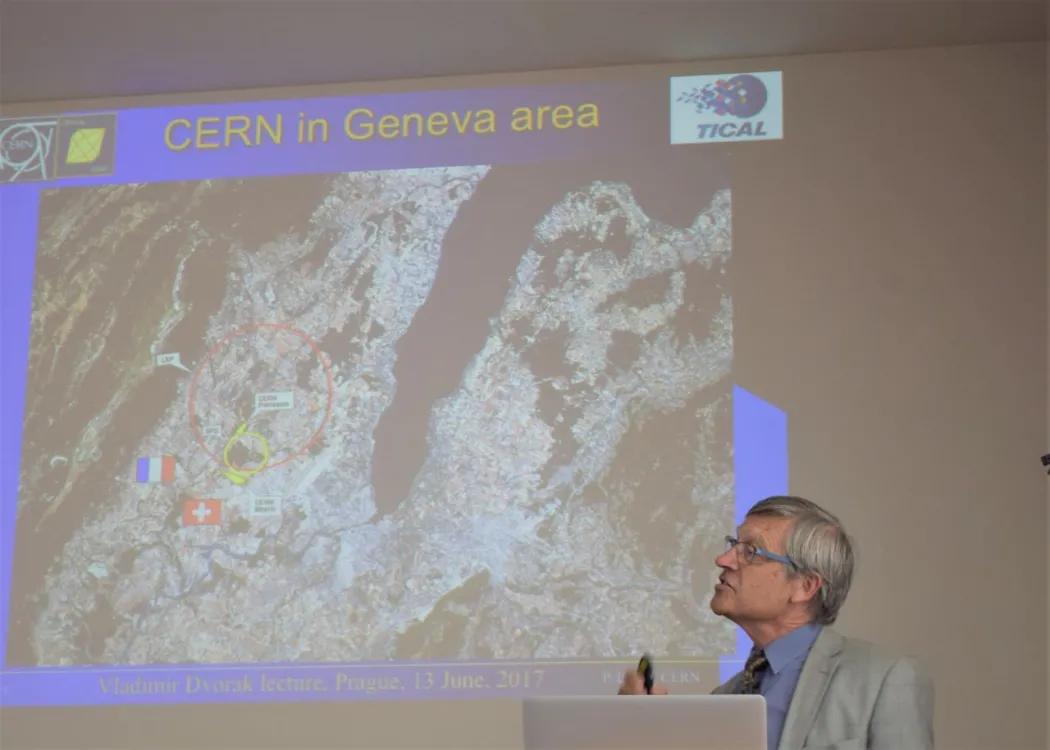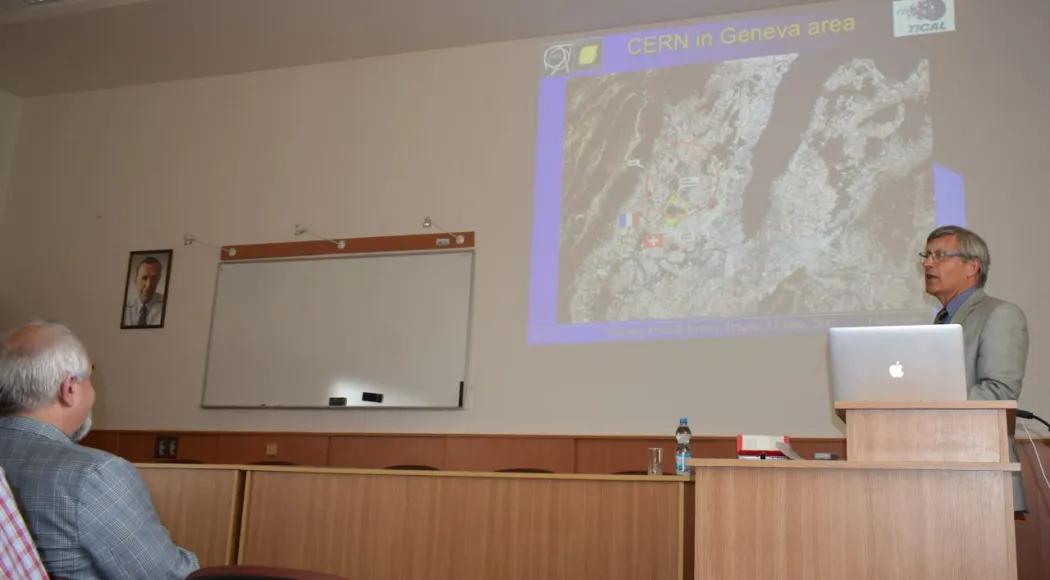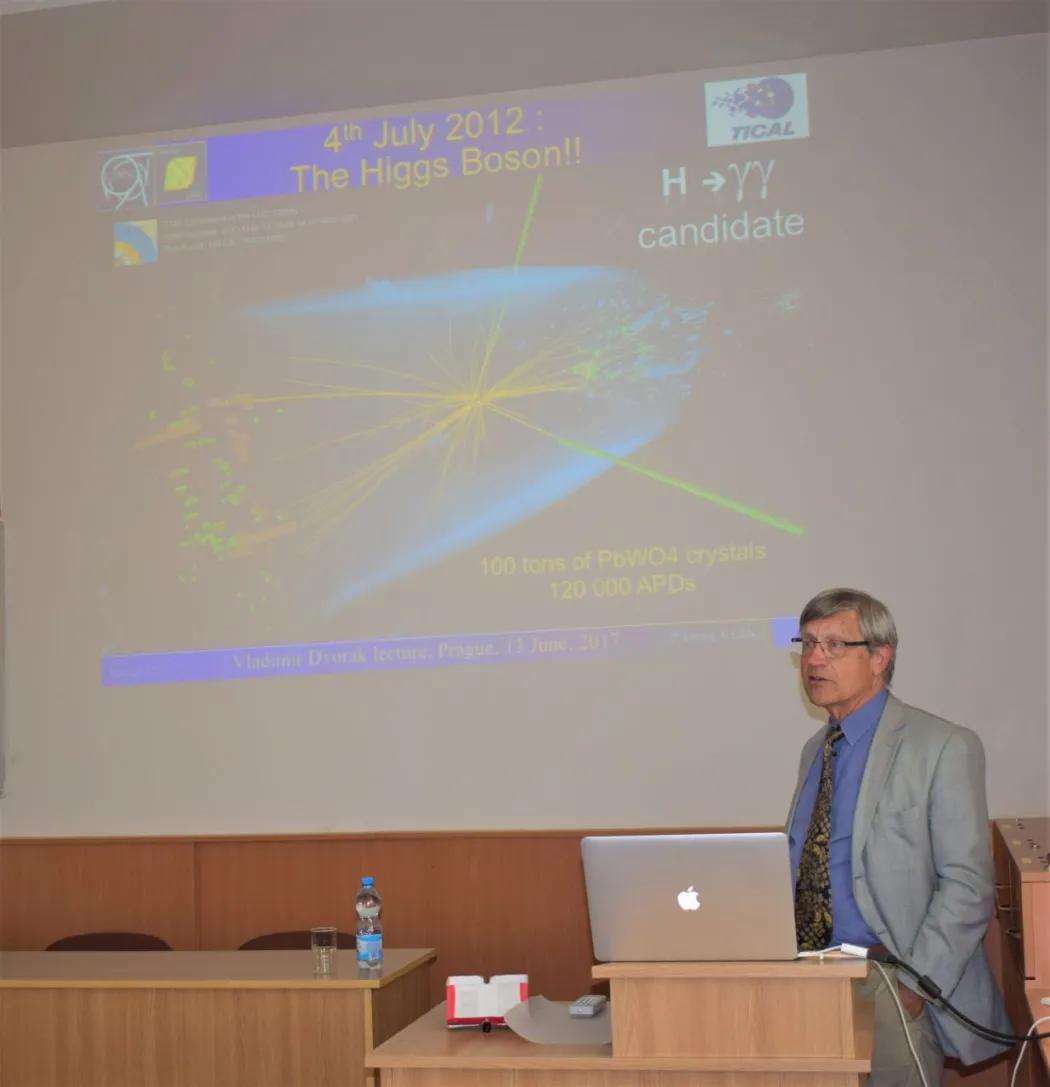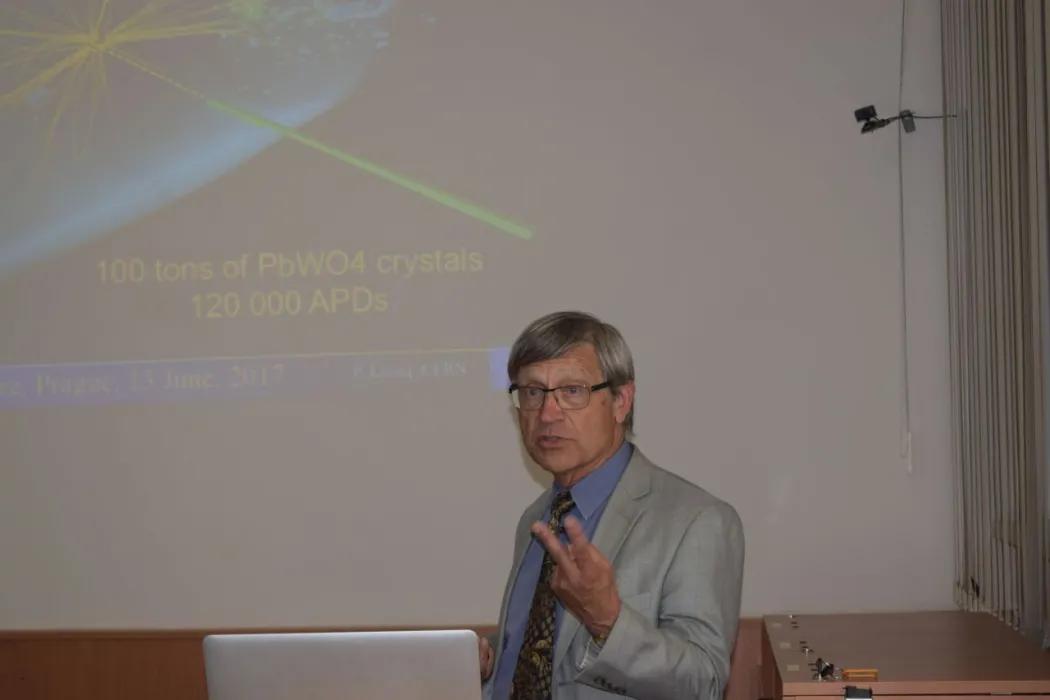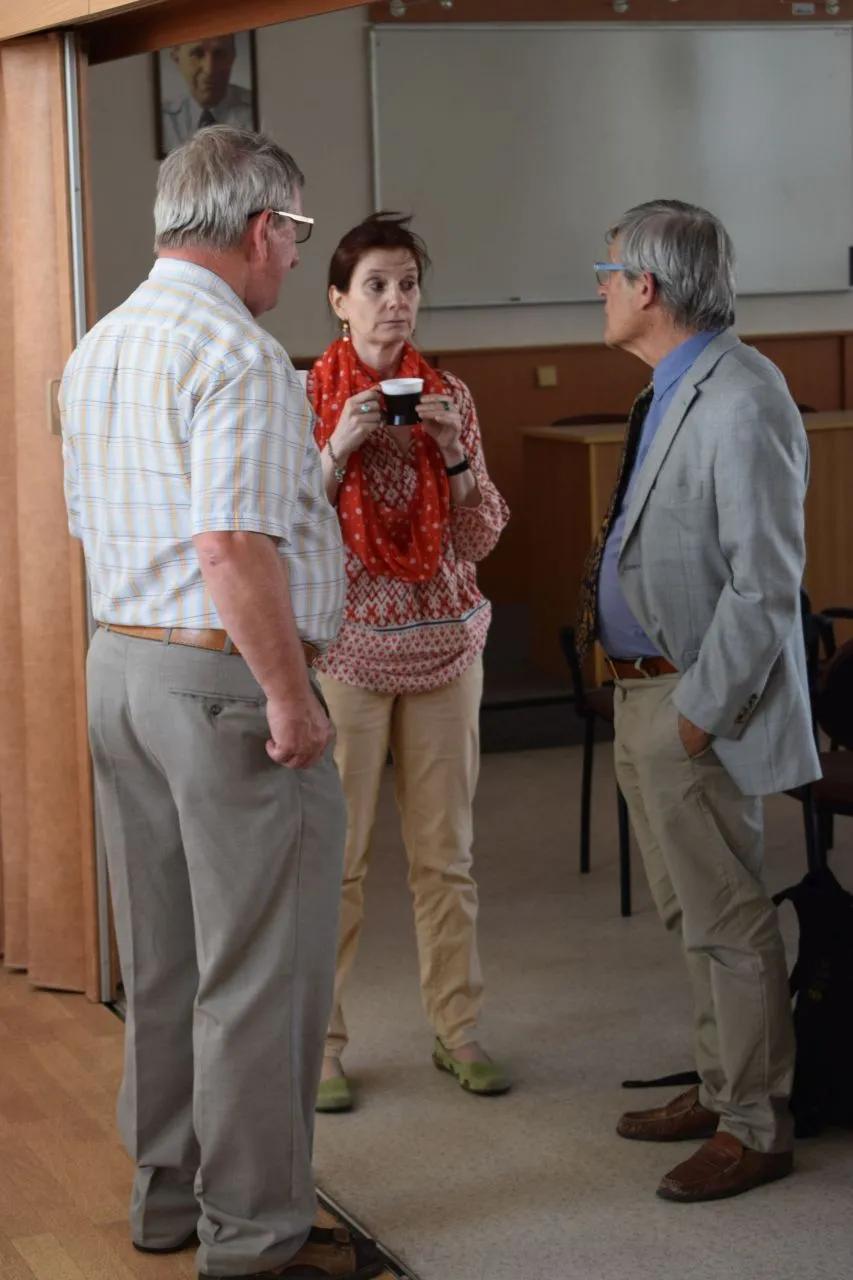The 9th Dvořák Lecture
The future generation of radiation detectors is more and more demanding on timing performance for a wide range of applications, such as time of flight (TOF) techniques for PET cameras in medical imaging and particle identification in nuclear physics and high energy physics detectors, precise event time tagging in high luminosity accelerators and a number of photonic applications based on single photon detection.
The time resolution of a scintillator-based detector is directly driven by the density of photoelectrons generated in the photodetector at the detection threshold. At the scintillator level it is related to the intrinsic light yield, the pulse shape (rise time and decay time) and the light transport from the gamma-ray conversion point to the photodetector. When aiming at 10ps time resolution fluctuations in the thermalization and relaxation time of hot electrons and holes generated by the interaction of ionization radiation with the crystal become important. These processes last for up to a few tens of ps and are followed by a complex trapping-detrapping process, Poole-Frenkel effect, Auger ionization of traps and electron-hole recombination, which can last for a few ns with very large fluctuations. This talk will review the different processes at work and evaluate if some of the transient phenomena taking place during the fast thermalization phase can be exploited to extract a time tag with a precision in the few ps range.
Some considerations will also be given on the possibility to exploit quantum confinement for the production of ultrafast spontaneous or stimulated emission in semi-conductors. A particularly promising route toward ultrafast emission comes in the form of ZnO:Ga quantum dots and of 2D CdSe nanosheets. The latter system is characterized by confinement in only one dimension and free electron and hole motion in the plane, which contributes to a giant oscillator strength transition and ultrafast radiative emission rates. Further, CdSe nanosheets have ultralow thresholds for stimulated emission, with a lifetime of less than 1 picosecond.
The light transport in the crystal is also an important source of time jitter. In particular light bouncing within the scintillator must be reduced as much as possible as it spreads the arrival time of photons on the photodetector and strongly reduces the light output by increasing the effect of light absorption within the crystal. It concerns typically about 70% of the photons generated in currently used scintillators.
A possible solution to overcome these problems is to improve the light extraction efficiency at the first hit of the photons on the crystal/photodetector coupling face by means of photonic crystals (PhCs) specifically designed to couple light propagation modes inside and outside the crystal at the limit of the total reflection angle.
Paul Lecoq
Paul Lecoq has received his diploma as Engineer in Physics Instrumentation at the Ecole Polytechnique de Grenoble in 1972, under the leadership of Nobel Laureate Louis Néel. After two years of work at the Nuclear Physics laboratory of the University of Montreal, he got his PhD in Nuclear Physics in 1974. Since then he has been working at CERN in 5 major international experiments on particle physics, one of them led by Nobel Laureate S. Ting. His action on detector instrumentation, and particularly on heavy inorganic scintillator materials has received a strong support from C. Rubia and G. Charpak. He has been the technical coordinator of the electromagnetic calorimeter of the CMS experiment at CERN, which played an important role in the discovery of the Higgs boson.
Prof. Paul Lecoq is an internationally recognized expert on scintillators, particle physics calorimetry and medical imaging. He is a member of a number of advisory committees and international societies. Since 2002, he is the promoter of the CERIMED initiative for networking physics and medicine in the field of medical imaging. He was elected as a member of the European Academy of Sciences in 2008. He was elected as an IEEE Fellow in 2015. He was awarded by an ERC Advanced Grant by the European Research Council in 2013. He is the technical coordinator of the European EndoTOFPET-US and Eurostars turbopet projects. Paul Lecoq is the founder of the CERN-based international Crystal Clear collaboration regrouping 28 institutes and companies worldwide contributing to the development of scintillator science.
The lecture and the discussion will be in English only, the translation to Czech will not be provided. The admission to the lecture is free, however it is necessary to reserve a seat using the registration form at: rezervace.fzu.cz


